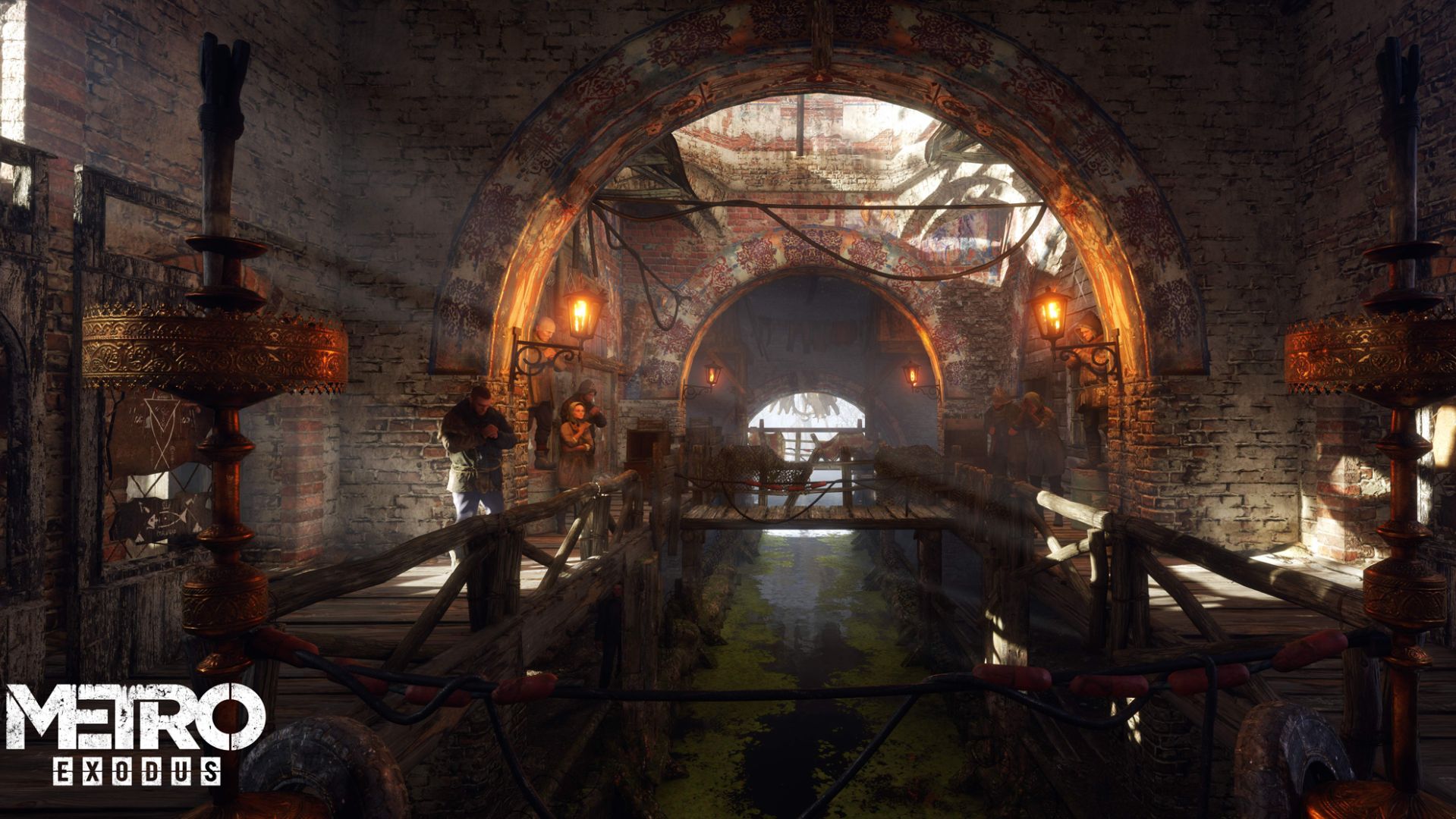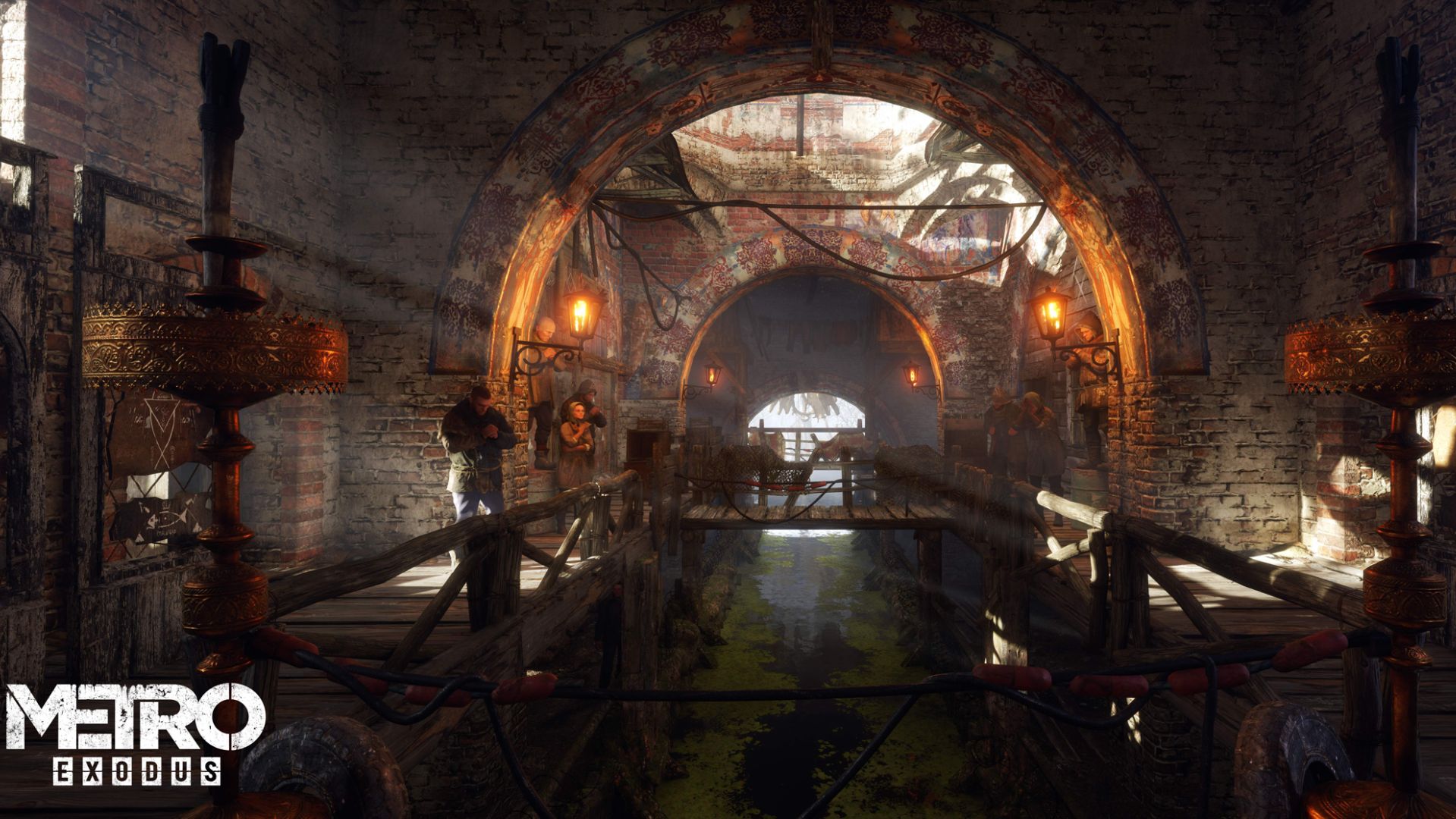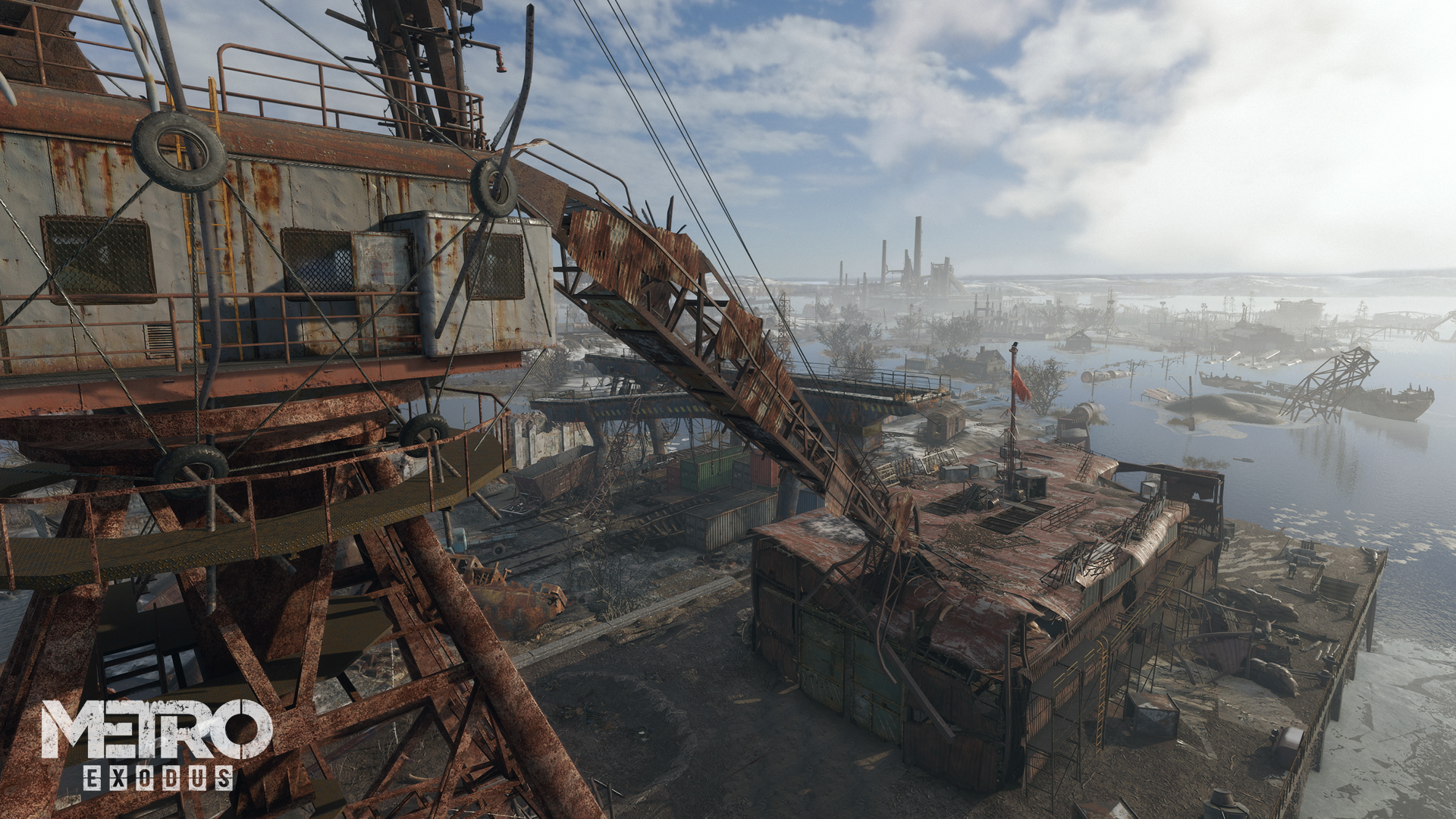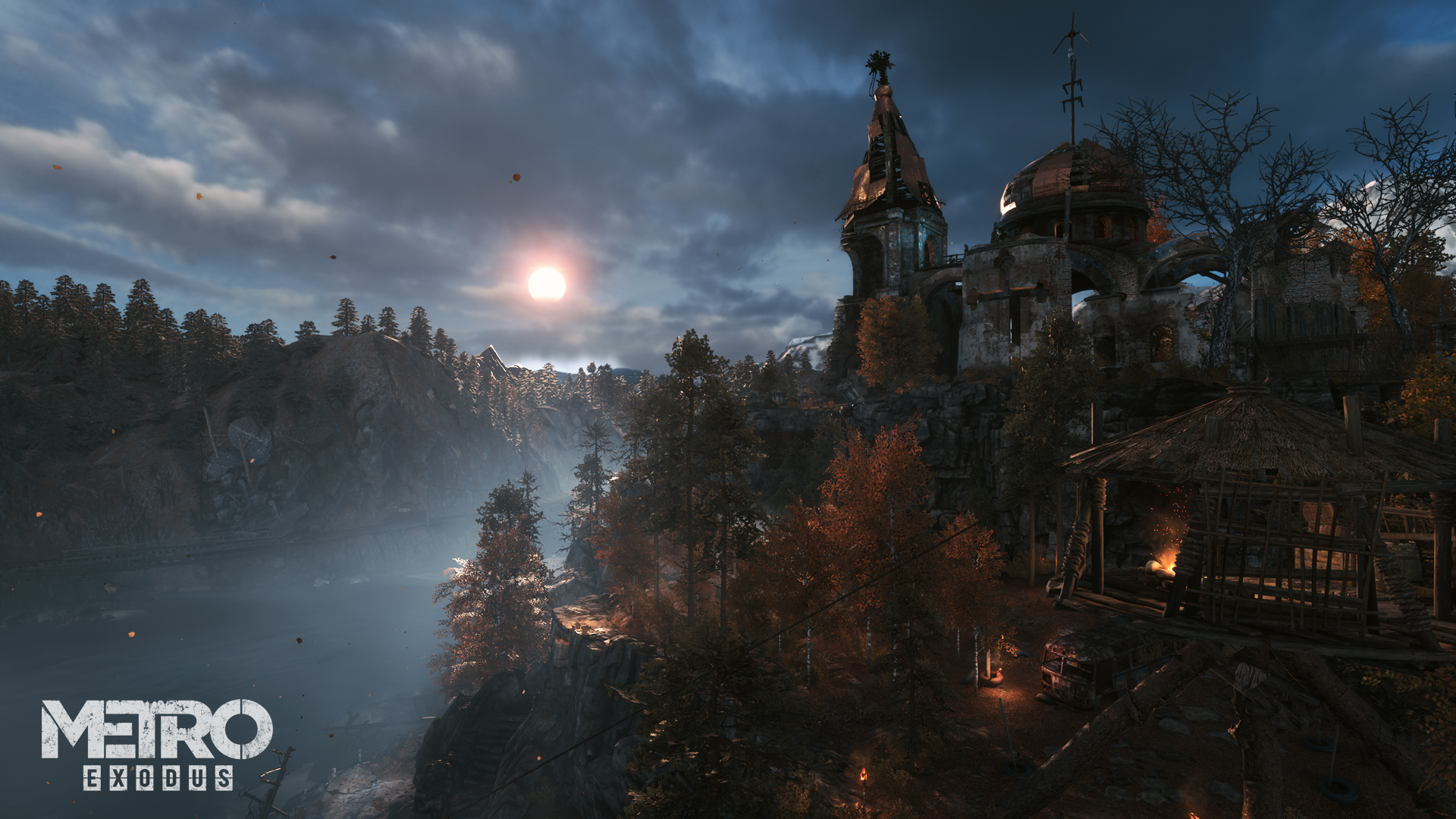
Over the past 10 years, 4A Games has been one of the few AAA studios consistently focused on building a top-tier visual experience on PC. By leveraging the full power of high-end PC hardware, 4A Games has created experienced that hold up, years later.
Back in 2010, Metro 2033 at its highest settings barely ran on flagship graphics cards like the GeForce GTX 480. Its extensive use of DirectX 11 features like hardware tessellation gave these parts a thorough workout, and made 60 FPS gaming a distant dream for next-gen hardware. Even in 2021, Metro 2033 cranked up to its highest settings holds up surprisingly well, barring the occasional low-res texture.
In 2013, months before the eighth-generation consoles came out, 4A Games launched Metro: Last Light, a game that demanded a GeForce GTX Titan as its recommended GPU. Back in the pre-GPU-shortage days, when $900 was an unheard-of ask for graphics grunt, Metro Last Light proved its mettle, with an enhanced visual set and more open environments. In terms of visual features, both Metro games held their own to the extent that, in 2014, 4A Games bundled the two and released them with just a bit of spit and polish as Metro Redux on the PS4 and Xbox One.
Fast forward five years, and in-game visuals have somewhat stagnated. While the PlayStation 5 and Xbox One promised impressive “next-gen” rendering technologies like physically-based material and global illumination, the midrange graphics hardware powering both these consoles – equivalent to an HD 7870 and HD 7790 respectively – soon turned something of a hard wall for AAA developers. Back in 2012, Ubisoft’s Watch Dogs tech demo showcased a game with mind blowing visuals, with reflections and real-time shadows, in particular, a leap above anything we’d seen in seventh-gen titles. A year later, when it released on the eighth-gen consoles, Watch Dogs was roundly criticizing for what fans thought were “downgraded” graphics.
“Downgrading” was something of recurrent theme in criticism of eighth-gen visuals, all the way up to Cyberpunk 2077 – which looks like a PlayStation 1 game on base platforms while assets stream in.
The logic made sense – developers had to compromise their graphics vision to accommodate hardware that would’ve been described as midrange even before the consoles themselves came out. But in 2019, with the 9th generation consoles just months away, and with NVIDIA having announced its ray-tracing enabled RTX cards, people were excited to see what the future actually looked like.
Metro Exodus on PC delivered a taste of that vision, with a single-bounce RTGI implementation, and lifelike materials. But over the past two years, ray-tracing hardware and top-end PC components have become significantly more capable. Better still, Sony and Microsoft impressed by announcing ninth-gen console specs that were a genuine leap over their predecessors.
It’s in this context that 4A Games released Metro Exodus: Enhanced Edition.
Ray-tracing front and center: a true next-gen showcase
When NVIDIA launched its Turing cards in 2019, and renamed their top-end GPU nomenclature – RTX instead of GTX cards – there was ample room for skepticism. The “new” cards like the GeForce RTX 2080 offered minimal performance gains over their Pascal predecessors. Apart from Quake II – a vintage 1997 shooter – Battlefield V was the only AAA game on sight with RTX effects enabled. And DLSS 1.0 – the AI upscaling technique NVIDIA outed to offset the performance impact of RTX, was laughable, with worse image quality than simple resolution scaling.
Ampere, and the arrival of the GeForce RTX 3080, alongside AMD’s competition in the form of the RX 6800 XT, reset expectations: here were cards with enough raw graphics horsepower to enable 4K/60 raster experience. On top of that they had the ray-tracing chops to deploy top-end effects, backed up by AI image upscaling that delivered better-than-native image quality. The PS5 and Xbox Series X aren’t quite in the same ballpark – but they’re close. And that’s exactly what empowered 4A Games to deliver Metro Exodus: Enhanced Edition. Is the enhanced edition more than a simple remaster? What does it bring to the table in terms of visuals? Is this a showcase of potential ninth-gen graphics? Yes, a lot.
The biggest change Metro Exodus: Enhanced Edition brings about is in terms of ray-traced lighting. 2019’s Metro Exodus launched before the announcement of the next-gen consoles. No one new if the PS5 and Xbox Series X would get hardware ray-tracing like NVIDIA’s top-end cards. As a result, 4A hedged their bets. The original game featured single-bounce ray-traced global illumination in exteriors, but also a standard rasterized lighting path. Ray-tracing was “bolted on,” and while the effect was convincing, there were major limitations. For starters, the single-bounce approach prevented light accumulation. This meant that areas like the interior of a cargo container – with poor direct lighting – wound up being unnaturally dark. Gamers had two not-so-great choices – rasterized lighting without tracing, or ray-tracing that led to unnaturally dark environments.
Metro Exodus: Enhanced Edition is the first AAA title on PC to require ray-tracing hardware. It won’t run on hardware without ray-tracing capabilities because fallback lighting no longer exists. 4A artists got rid of “fake” raster lights around Metro Exodus levels, meaning everything relied on the multi-bounce ray-traced lighting. Infinite light bounces are critical to the visual look of the enhanced edition. In the original, light from a light source would hit an object, then reflect or “bounce” a single time. This worked reasonably well in well-lit exteriors, but caused other areas to become overly dark. In the enhanced edition, infinite light bounce means that light from a single, indirect source can propagate across a whole interior – the light from an open window will hit the wall opposite, then “bounce” to the floor, then back to the wall – just like light does in real life. Multiple-bounce ray-tracing is extremely expensive from a computation standpoint. As a result, 4A leveraged an innovative shortcut. Light bounce wasn’t handled completely in real time. Rather, Metro Exodus: Enhanced Edition used a “temporal accumulation” approach, with lighting information extracted across multiple frames. This means it can take 1-2 seconds for light to propagate across a scene – but this is almost impossible to notice in-game.
DLSS 2.0: Getting upscaling right
2019’s Metro Exodus launched with DLSS 1.0, NVIDIA’s initial solution to the profound performance hit incurred by ray-tracing. DLSS 1.0, was in a word, bad. Dropping the shading rate in Metro Exodus to 0.7x (effectively running shaders at 70 percent resolution) delivered better image quality than DLSS and more or less equivalent performance. DLSS 1.0 image quality was so laughably bad that AMD actually introduced CAS, little more than a post-process sharpening filter, as an alternative. If your AI-upscaled wizardry delivers worse results than sharpening an upscale frame, it needs a fundamental rework.
NVIDIA apparently got the message, completely revamping their approach to DLSS. DLSS 2.0, the implementation we see in Metro Exodus, delivers on NVIDIA’s original promise. The “Quality” setting actually manages to look better than native with Metro’s standard TAA. Balanced and Performance are also hard to tell apart. And remarkably, performance is better than 1.0. We’re looking at massively improved image quality – genuinely on par with native rendering, with better performance.
Enhanced textures: A mixed bag
4A Games promised the addition of 4K textures to Metro Exodus: Enhanced Edition. Unfortunately, texture quality is undermined significantly by what seems to be a bug in the texture streaming system. On our RTX 3080 test bed, we were unable to get full-resolution textures to load in at native or with DLSS enabled. In some maps like Caspian, certain parts of geometry – half of a rock, for instance – would load up with a high res texture, while the other half would remain blurry. This was a frustrating situation that persisted across most of the game. When textures actually loaded in, however, they were great. While the ray-traced lighting was fantastic, the low texture resolution – something we hope 4A will fix with a patch – detracted from the overall experience.
Metro Exodus: Enhanced Edition is the first major game to require ray-tracing hardware. At times, the game manages a level of photorealism we’ve simply not seen elsewhere. 2010’s Metro 2033 was a decent predictor of what visuals would look like in eighth-gen titles. Likewise, we think Metro Exodus: Enhanced Edition sets the bar, as it is, for PlayStation 5 and Xbox Series X/S titles as we move past the cross-gen era.
This game was reviewed on PC.





